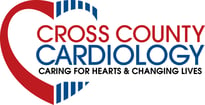Olive oil has been traditionally used as the main culinary and dressing fat in Mediterranean countries and is a key component of the Mediterranean diet. Well-known for its health benefits, it has become more popular worldwide in recent decades. Olive oil is high in monounsaturated fatty acids, especially oleic acid, and other minor components including vitamin E and polyphenols, contributing to its anti-inflammatory and antioxidant properties (1).
We share with you today the AVATAR trial.
Background: Surgical aortic valve replacement (SAVR) represents a class I indication in symptomatic patients with severe aortic stenosis (AS). However, indications for early SAVR in asymptomatic patients with severe AS and normal left ventricular function remain debated.
Methods: The Aortic Valve replAcemenT versus conservative treatment in Asymptomatic seveRe aortic stenosis (AVATAR) trial is an investigator-initiated international prospective randomized controlled trial that evaluated the safety and efficacy of early SAVR in the treatment of asymptomatic patients with severe AS, according to common criteria (valve area ≤1 cm2 with aortic jet velocity >4 m/s or a mean trans-aortic gradient ≥40 mm Hg), and with normal LV function. Negative exercise testing was mandatory for inclusion. The primary hypothesis was that early SAVR would reduce the primary composite endpoint of all-cause death, acute myocardial infarction, stroke or unplanned hospitalization for heart failure, as compared to a conservative strategy according to guidelines. The trial was designed as event-driven to reach a minimum of 35 prespecified events. The study was performed in 9 centers in 7 European countries.
Results: Between June 2015 and September 2020, 157 patients (mean age 67 years, 57 % men) were randomly allocated to early surgery (n=78) or conservative treatment (n=79). Follow-up was completed in May 2021. Overall median follow-up was 32 months: 28 months in the early surgery group and 35 months in the conservative treatment group. There was a total of 39 events, 13 in early surgery and 26 in conservative treatment group. In the early surgery group, 72 patients (92.3 %) underwent SAVR with operative mortality of 1.4 %. In an intention-to-treat analysis, patients randomized to early surgery had a significantly lower incidence of primary composite endpoint than those in the conservative arm (HR 0.46, 95 % CI 0.23-0.90, p=0.02). There was no statistical difference in secondary endpoints, including all-cause mortality, first heart failure hospitalizations, major bleeding or thromboembolic complications, but trends were consistent with the primary outcome.
Conclusions: In asymptomatic patients with severe AS, early surgery reduced a primary composite of all-cause death, acute myocardial infarction, stroke or unplanned hospitalization for heart failure compared with conservative treatment. This randomized trial provides preliminary support for early SAVR once AS becomes severe, regardless of symptoms.
--
At CCC Mount Sinai, our team of skilled and seasoned cardiac professionals can evaluate, diagnose and recommend treatments as they pertain to this and other heart conditions. Make an appointment today and know you have the best care. Call 201-499-7361 or go online to learn more.
Original article published 11/13/21 in American Heart Association Journal by authors: Marko Banovic, Svetozar Putnik, Martin Penicka, Gheorghe Doros, Marek A. Deja, Radka Kockova, Martin Kotrc, Sigita Glaveckaite, Hrvoje Gasparovic, Nikola Pavlovic, Lazar Velicki, Stefano Salizzoni, Wojtek Wokakowski, Guy Van Camp, Serge D. Nikolic, Bernard Iung and Jozef Bartunek on behalf of the AVATAR-trial investigators












